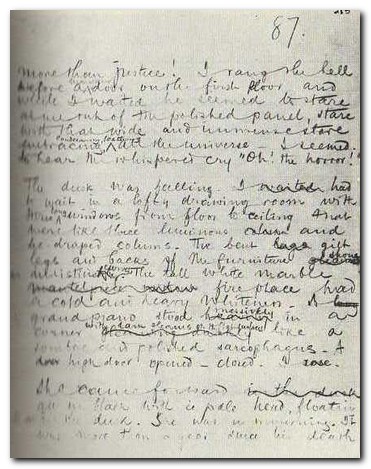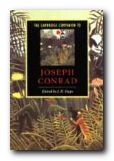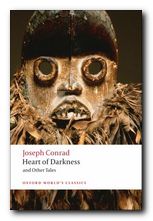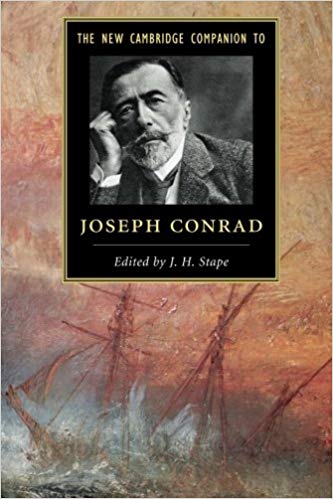tutorial, commentary, study resources, plot, and web links
Gaspar Ruiz was written shortly after Nostromo in 1904–5. It was published in The Strand Magazine in 1906, and collected in A Set of Six, published in 1908 (UK) and 1915 (US). The other stories in this collection of Joseph Conrad’s work were The Informer, The Brute, The Duel, Il Conde, and An Anarchist. This story was the only piece of Conrad’s fiction ever adapted by the author for cinema, as Gaspar the Strong Man, 1920.

Gaspar Ruiz – critical commentary
In the ‘Author’s Note’ which acts as an introductory essay to A Set of Six in which this tale appears, Conrad observes that he wrote the story within a month of finishing Nostromo, and claims that ‘apart from the locality … the novel and the story have nothing in common, neither mood, nor intention and, certainly, not the style’. This statement just serves to illustrate the observation made by D.H.Lawrence that we should ‘trust the tale, not the teller’.
Gaspar Ruiz is so similar to Nostromo that it could almost be unused section from the novel. Quite apart from the Latin-American setting, it has more of the characteristics of a novel than a story – or even a tale.
There are simply too many large scale events which obtrude and disrupt such a short piece of fiction. There is a firing squad execution; a miraculous survival; an earthquake; a switching of political allegiance; a changing geographic location; an undramatised rise from poverty to large scale political success; an almost ludicrous man-cannon merger; a death and a suicide. This is all too much for even the most elastic of literary forms – the tale – to bear.
Conrad also seeks to justify the content of his tale with the most threadbare appeals to verisimilitude in his introduction. He claims that the character of Gaspar Ruiz comes from a documentary source:
The curious who may be mistrusting my imagination are referred to that printed document, Vol. II, I forget the page, but it is somewhere not far from the end.
And the final semi-ludicrous episode of Ruiz having the cannon strapped to his back is justified on even thinner grounds:
the gun episode did really happen, or at least I am bound to believe it because I remember it, described in an extremely matter-of-fact tone, in some book I read in my boyhood; and I am not going to discard the beliefs of my boyhood for anybody on earth.
These remarks might in fact be tongue-in-cheek – Conrad throwing sops out to the reading public that ‘these things really did happen, and I have proof’. But as contemporary readers we are fully justified in disatending completely to these claims – be they true or not. The fact is that these disparate dramatic incidents do not add up to a coherent whole or a satisfactory narrative composition.
It is not the a-chronological arrangement of their elements which is in question. Most of the information comes to the reader from Santierra’s account, though as is common in Conrad’s work, there are frequent drifts into third-person omniscient narrative mode.
In fact the narrative begins in third person omniscient narrative mode; then it shifts into first person narrative mode as Santierra takes over the story. Later when Gaspar Ruiz is escaping from under a pile of dead bodies, Conrad is forced back into third person mode in order to give an account of his feelings and wishes.
A novel such as Nostromo is a large scale account of complex characters and events – a novel of the type that Henry James described as ‘loose baggy monsters’. That is, it can incorporate all sorts of digressions, over-dramatic episodes, and non-essential characters without losing credibility. The same cannot be said for Gaspar Ruiz.
Gaspar Ruiz – study resources
![]() A Set of Six – CreateSpace editions – Amazon UK
A Set of Six – CreateSpace editions – Amazon UK
![]() A Set of Six – CreateSpace editions – Amazon US
A Set of Six – CreateSpace editions – Amazon US
![]() The Complete Works of Joseph Conrad – Kindle eBook
The Complete Works of Joseph Conrad – Kindle eBook
![]() A Set of Six – eBook versions at Project Gutenberg
A Set of Six – eBook versions at Project Gutenberg
![]() Joseph Conrad: A Biography – Amazon UK
Joseph Conrad: A Biography – Amazon UK
![]() The Cambridge Companion to Joseph Conrad – Amazon UK
The Cambridge Companion to Joseph Conrad – Amazon UK
![]() Routledge Guide to Joseph Conrad – Amazon UK
Routledge Guide to Joseph Conrad – Amazon UK
![]() Oxford Reader’s Companion to Conrad – Amazon UK
Oxford Reader’s Companion to Conrad – Amazon UK
![]() Notes on Life and Letters – Amazon UK
Notes on Life and Letters – Amazon UK
![]() Joseph Conrad – biographical notes
Joseph Conrad – biographical notes
Gaspar Ruiz – plot summary
Part I. Gaspar Ruiz joined the republican forces during a revolutionary war in an un-named South American country. He was captured by the Royalist forces and forced to bear arms. Having been recaptured by the republicans, he is about to be shot as a deserter and a traitor.
Part II. The detainees are locked in a cellar before being executed later in the day. When they need water, buckets cannot be passed through the window bars. Lieutenant Santierra, sends for the door key, but the officer in charge is having his siesta.
Part III. The story flashes forwards fifty years as Santierra, now a General, recalls his youthful chagrin. He has organised a delay in the executions, but now seems to have made matters worse. Gaspar Ruiz persuades him to release his tied hands.
Part IV. The soldiers think Gaspar Ruiz is trying to escape: Santierra has to deflect an attempt to shoot him. But Gaspar Ruiz bends the window bars and distributes water to the prisoners. Later the same day he goes meekly to be executed, along with the other prisoners.
Part V. Bullets hit Gaspar Ruiz, but they do not kill him.He remains motionless beneath a pile of bodies. A soldier slashes his neck with a sword, but this does not kill him either. He escapes at night and hides in a nearby house.
Part VI. Santierra then recounts (many years later) the story of the old Royalist and his daughter Donna Ermina in whose house Gaspar Ruiz sought refuge. The old man is Spanish and has lost everything in the revolution, and has become deranged. They hide Gaspar Ruiz in a shed.
Part VII. Gaspar Ruiz recovers slowly, but he realises that he cannot go anywhere without the fear of recapture and almost certain execution.
Part VIII. Santierra patrols this same area and passes the house each night. He talks to the girl, who tells him that Gaspar Ruiz wants safe passage and seeks an audience with a senior commander to explain his case. Santierra and his colleague Robles head an attempt to arrest Ruiz that night, but when they get to the house there is an earthquake. Ruiz saves the lives of Robles and Santierra, then rescues Donna Ermina from the wreckage and escapes.
Part IX. Santierra and his troops are guarding the destroyed town against looters. When Santierra moves to Santiago, Gaspar Ruiz turns up there again, and conducts a successful raid against the Royalists as proof of his adherence to the revolutionary cause. Its leader, San Martin, makes him a captain as a reward. He is appointed to protect the southern border whilst the army takes the revolutionary war into Peru.
Part X. Gaspar Ruiz establishes his own army, goes from strength to strength, and under the influence of Donna Ermina reverts to the Royalist cause, calling himself Colonel of the King of Spain The revolutionaries return from success in Peru, but they fail to capture him.
Part XI. Ruiz sends his wife and child over the mountains to safety, but they are betrayed and arrested. Santierra is captured by Ruiz’s men, but he is spared because Ruiz recognises him. He uses him as a negotiator to attempt a recovery of Donna Ermina and his child from a fortress where they are being held. All attempts to attack the fortress fail, and when a cannon is requisitioned it arrives without any firing platform. Gaspar Ruiz has the cannon fastened to his own back so it can be fired at the fortress – a strategy which kills him.
Part XII. Santierra is given the task of escorting Donna Ermina and her child. As a well-known Royalist, Donna Ermina is very fearful of what will happen to her. She gives the child to Santierra, then throws herself off a cliff. Santierra later adopts the child as his own daughter, and makes her his heiress.
Joseph Conrad – video biography
Gaspar Ruiz – principal characters
| Lieutenant Santierra | officer in army of liberation – becomes a general |
| Gaspar Ruiz | a simple and very strong peasant |
| Dona Erminia | daughter of a royalist |
| General Robles | revolutionary commander |
Joseph Conrad’s writing

Manuscript page from Heart of Darkness
 The Cambridge Companion to Joseph Conrad offers a series of essays by leading Conrad scholars aimed at both students and the general reader. There’s a chronology and overview of Conrad’s life, then chapters that explore significant issues in his major writings, and deal in depth with individual works. These are followed by discussions of the special nature of Conrad’s narrative techniques, his complex relationships with late-Victorian imperialism and with literary Modernism, and his influence on other writers and artists. Each essay provides guidance to further reading, and a concluding chapter surveys the body of Conrad criticism.
The Cambridge Companion to Joseph Conrad offers a series of essays by leading Conrad scholars aimed at both students and the general reader. There’s a chronology and overview of Conrad’s life, then chapters that explore significant issues in his major writings, and deal in depth with individual works. These are followed by discussions of the special nature of Conrad’s narrative techniques, his complex relationships with late-Victorian imperialism and with literary Modernism, and his influence on other writers and artists. Each essay provides guidance to further reading, and a concluding chapter surveys the body of Conrad criticism.
![]() Buy the book at Amazon UK
Buy the book at Amazon UK
![]() Buy the book at Amazon US
Buy the book at Amazon US

Joseph Conrad’s writing table
Further reading
![]() Amar Acheraiou Joseph Conrad and the Reader, London: Macmillan, 2009.
Amar Acheraiou Joseph Conrad and the Reader, London: Macmillan, 2009.
![]() Jacques Berthoud, Joseph Conrad: The Major Phase, Cambridge: Cambridge University Press, 1978.
Jacques Berthoud, Joseph Conrad: The Major Phase, Cambridge: Cambridge University Press, 1978.
![]() Muriel Bradbrook, Joseph Conrad: Poland’s English Genius, Cambridge: Cambridge University Press, 1941
Muriel Bradbrook, Joseph Conrad: Poland’s English Genius, Cambridge: Cambridge University Press, 1941
![]() Harold Bloom (ed), Joseph Conrad (Bloom’s Modern Critical Views, New Yoprk: Chelsea House Publishers, 2010
Harold Bloom (ed), Joseph Conrad (Bloom’s Modern Critical Views, New Yoprk: Chelsea House Publishers, 2010
![]() Hillel M. Daleski , Joseph Conrad: The Way of Dispossession, London: Faber, 1977
Hillel M. Daleski , Joseph Conrad: The Way of Dispossession, London: Faber, 1977
![]() Daphna Erdinast-Vulcan, Joseph Conrad and the Modern Temper, Oxford: Oxford University Press, 1991.
Daphna Erdinast-Vulcan, Joseph Conrad and the Modern Temper, Oxford: Oxford University Press, 1991.
![]() Aaron Fogel, Coercion to Speak: Conrad’s Poetics of Dialogue, Cambridge, Mass: Harvard University Press, 1985
Aaron Fogel, Coercion to Speak: Conrad’s Poetics of Dialogue, Cambridge, Mass: Harvard University Press, 1985
![]() John Dozier Gordon, Joseph Conrad: The Making of a Novelist, Cambridge, Mass: Harvard University Press, 1940
John Dozier Gordon, Joseph Conrad: The Making of a Novelist, Cambridge, Mass: Harvard University Press, 1940
![]() Albert J. Guerard, Conrad the Novelist, Cambridge, Mass: Harvard University Press, 1958
Albert J. Guerard, Conrad the Novelist, Cambridge, Mass: Harvard University Press, 1958
![]() Robert Hampson, Joseph Conrad: Betrayal and Identity, Basingstoke: Macmillan, 1992
Robert Hampson, Joseph Conrad: Betrayal and Identity, Basingstoke: Macmillan, 1992
![]() Jeremy Hawthorn, Joseph Conrad: Language and Fictional Self-Consciousness, London: Edward Arnold, 1979
Jeremy Hawthorn, Joseph Conrad: Language and Fictional Self-Consciousness, London: Edward Arnold, 1979
![]() Jeremy Hawthorn, Joseph Conrad: Narrative Technique and Ideological Commitment, London: Edward Arnold, 1990
Jeremy Hawthorn, Joseph Conrad: Narrative Technique and Ideological Commitment, London: Edward Arnold, 1990
![]() Jeremy Hawthorn, Sexuality and the Erotic in the Fiction of Joseph Conrad, London: Continuum, 2007.
Jeremy Hawthorn, Sexuality and the Erotic in the Fiction of Joseph Conrad, London: Continuum, 2007.
![]() Owen Knowles, The Oxford Reader’s Companion to Conrad, Oxford: Oxford University Press, 1990
Owen Knowles, The Oxford Reader’s Companion to Conrad, Oxford: Oxford University Press, 1990
![]() Jakob Lothe, Joseph Conrad: Voice, Sequence, History, Genre, Ohio State University Press, 2008
Jakob Lothe, Joseph Conrad: Voice, Sequence, History, Genre, Ohio State University Press, 2008
![]() Gustav Morf, The Polish Shades and Ghosts of Joseph Conrad, New York: Astra, 1976
Gustav Morf, The Polish Shades and Ghosts of Joseph Conrad, New York: Astra, 1976
![]() Ross Murfin, Conrad Revisited: Essays for the Eighties, Tuscaloosa, Ala: University of Alabama Press, 1985
Ross Murfin, Conrad Revisited: Essays for the Eighties, Tuscaloosa, Ala: University of Alabama Press, 1985
![]() Jeffery Myers, Joseph Conrad: A Biography, Cooper Square Publishers, 2001.
Jeffery Myers, Joseph Conrad: A Biography, Cooper Square Publishers, 2001.
![]() Zdzislaw Najder, Joseph Conrad: A Life, Camden House, 2007.
Zdzislaw Najder, Joseph Conrad: A Life, Camden House, 2007.
![]() George A. Panichas, Joseph Conrad: His Moral Vision, Mercer University Press, 2005.
George A. Panichas, Joseph Conrad: His Moral Vision, Mercer University Press, 2005.
![]() John G. Peters, The Cambridge Introduction to Joseph Conrad, Cambridge: Cambridge University Press, 2006.
John G. Peters, The Cambridge Introduction to Joseph Conrad, Cambridge: Cambridge University Press, 2006.
![]() James Phelan, Joseph Conrad: Voice, Sequence, History, Genre, Ohio State University Press, 2008.
James Phelan, Joseph Conrad: Voice, Sequence, History, Genre, Ohio State University Press, 2008.
![]() Edward Said, Joseph Conrad and the Fiction of Autobiography, Cambridge Mass: Harvard University Press, 1966
Edward Said, Joseph Conrad and the Fiction of Autobiography, Cambridge Mass: Harvard University Press, 1966
![]() Allan H. Simmons, Joseph Conrad: (Critical Issues), London: Macmillan, 2006.
Allan H. Simmons, Joseph Conrad: (Critical Issues), London: Macmillan, 2006.
![]() J.H. Stape, The Cambridge Companion to Joseph Conrad, Cambridge: Cambridge University Press, 1996
J.H. Stape, The Cambridge Companion to Joseph Conrad, Cambridge: Cambridge University Press, 1996
![]() John Stape, The Several Lives of Joseph Conrad, Arrow Books, 2008.
John Stape, The Several Lives of Joseph Conrad, Arrow Books, 2008.
![]() Peter Villiers, Joseph Conrad: Master Mariner, Seafarer Books, 2006.
Peter Villiers, Joseph Conrad: Master Mariner, Seafarer Books, 2006.
![]() Ian Watt, Conrad in the Nineteenth Century, London: Chatto and Windus, 1980
Ian Watt, Conrad in the Nineteenth Century, London: Chatto and Windus, 1980
![]() Cedric Watts, Joseph Conrad: (Writers and their Work), London: Northcote House, 1994.
Cedric Watts, Joseph Conrad: (Writers and their Work), London: Northcote House, 1994.
Other writing by Joseph Conrad
 Lord Jim (1900) is the earliest of Conrad’s big and serious novels, and it explores one of his favourite subjects – cowardice and moral redemption. Jim is a ship’s captain who in youthful ignorance commits the worst offence – abandoning his ship. He spends the remainder of his adult life in shameful obscurity in the South Seas, trying to re-build his confidence and his character. What makes the novel fascinating is not only the tragic but redemptive outcome, but the manner in which it is told. The narrator Marlowe recounts the events in a time scheme which shifts between past and present in an amazingly complex manner. This is one of the features which makes Conrad (born in the nineteenth century) considered one of the fathers of twentieth century modernism.
Lord Jim (1900) is the earliest of Conrad’s big and serious novels, and it explores one of his favourite subjects – cowardice and moral redemption. Jim is a ship’s captain who in youthful ignorance commits the worst offence – abandoning his ship. He spends the remainder of his adult life in shameful obscurity in the South Seas, trying to re-build his confidence and his character. What makes the novel fascinating is not only the tragic but redemptive outcome, but the manner in which it is told. The narrator Marlowe recounts the events in a time scheme which shifts between past and present in an amazingly complex manner. This is one of the features which makes Conrad (born in the nineteenth century) considered one of the fathers of twentieth century modernism.
![]() Buy the book from Amazon UK
Buy the book from Amazon UK
![]() Buy the book from Amazon US
Buy the book from Amazon US
 Heart of Darkness (1902) is a tightly controlled novella which has assumed classic status as an account of the process of Imperialism. It documents the search for a mysterious Kurtz, who has ‘gone too far’ in his exploitation of Africans in the ivory trade. The reader is plunged deeper and deeper into the ‘horrors’ of what happened when Europeans invaded the continent. This might well go down in literary history as Conrad’s finest and most insightful achievement, and it is based on his own experiences as a sea captain. This volume also contains ‘An Outpost of Progress’ – the magnificent study in shabby cowardice which prefigures ‘Heart of Darkness’.
Heart of Darkness (1902) is a tightly controlled novella which has assumed classic status as an account of the process of Imperialism. It documents the search for a mysterious Kurtz, who has ‘gone too far’ in his exploitation of Africans in the ivory trade. The reader is plunged deeper and deeper into the ‘horrors’ of what happened when Europeans invaded the continent. This might well go down in literary history as Conrad’s finest and most insightful achievement, and it is based on his own experiences as a sea captain. This volume also contains ‘An Outpost of Progress’ – the magnificent study in shabby cowardice which prefigures ‘Heart of Darkness’.
![]() Buy the book from Amazon UK
Buy the book from Amazon UK
![]() Buy the book from Amazon US
Buy the book from Amazon US
© Roy Johnson 2013
Joseph Conrad web links
Joseph Conrad at Mantex
Biography, tutorials, book reviews, study guides, videos, web links.
Joseph Conrad – his greatest novels and novellas
Brief notes introducing his major works in recommended editions.
Joseph Conrad at Project Gutenberg
A major collection of free eTexts in a variety of formats.
Joseph Conrad at Wikipedia
Biography, major works, literary career, style, politics, and further reading.
Joseph Conrad at the Internet Movie Database
Adaptations for the cinema and television – in various languages. Full details of directors and actors, production notes, box office, trivia, and quizzes.
Works by Joseph Conrad
Large online database of free HTML texts, digital scans, and eText versions of novels, stories, and occasional writings.
The Joseph Conrad Society (UK)
Conradian journal, reviews. and scholarly resources.
The Joseph Conrad Society of America
American-based – recent publications, journal, awards, conferences.
Hyper-Concordance of Conrad’s works
Locate a word or phrase – in the context of the novel or story.
More on Joseph Conrad
Twentieth century literature
Joseph Conrad complete tales
